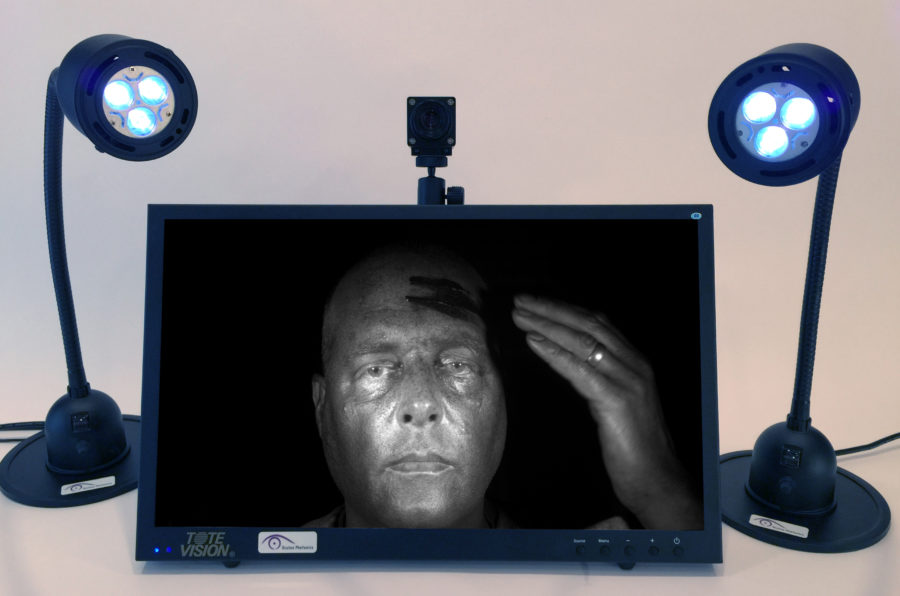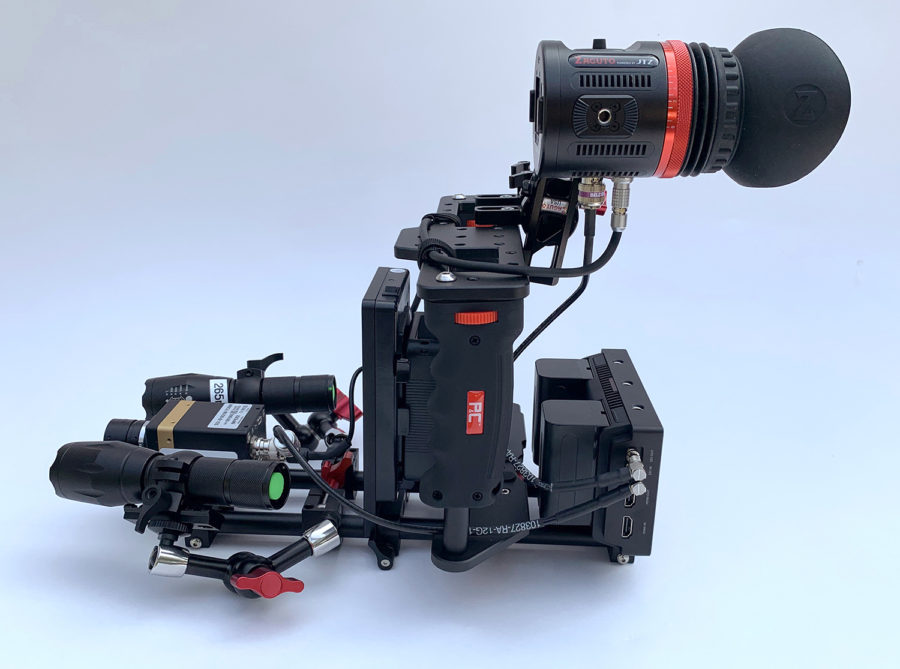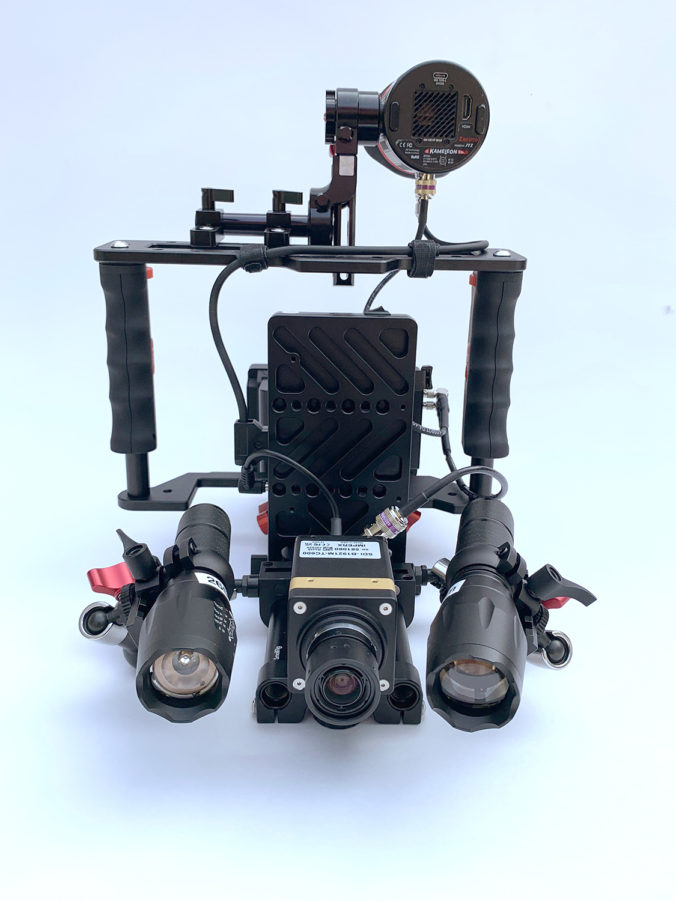UVCorder HD™
The UVCorder HD™ consists of a high-definition ultraviolet camera module mounted on a camera “cage”. The camera is the same one used in the UVSIS HD product. The UV camera module puts out HD-SDI video, which is displayed and recorded by a Blackmagic Designs digital video recorder. The UV camera and electronic viewfinder are powered by a V-mount lithium ion battery, and the DVR has its own rechargeable lithium ion battery set. The UV camera contains a silicon CCD camera with enhanced ultraviolet response in the 300-400 nm range, and a peak response at 370nm. A special filter rejects both visible and infrared light from reaching the sensor. This means that the UVCorder HD™ can be used in situations where the ultraviolet illumination is less than the visible or infrared illumination. For example, on a clear, sunny day, the UV images formed by the system are 99% ultraviolet in their spectral content. A standard longwave UV light can be used in indoor situations, since by design most interior lighting emits little UV light. The UVCorder HD is usually equipped with twin 365nm UV LED flashlights on adjustable ball head mounts. Live images from the UV camera are displayed on a 5 ” LCD screen on the digital video recorder. The video is recorded to a 512GB removable solid-state hard drive in the DVR. The card will record up to 8 hours of HD video. The UVCorder HD comes standard with a 16mm glass lens that has good UV transmission. The lens has an adjustable iris that ranges from f/1.4 to f/16 and then to fully closed. Other focal length lenses are available. The unit has tripod mount tapped holes in the bottom so it can be tripod mounted. The system is portable and weights 6 pounds. The cage is 10 inches on a side.
Ultraviolet Imaging Products
In 2014, a video produced by Mr. Thomas Leveritt of New York called How the Sun Sees You stimulated a great deal of worldwide interest in UV skin imaging. That year, Oculus Photonics introduced the UVSIS™, a “UV Mirror” that allows skin care professionals to assess sun damage of facial skin and to help clients practice proper application of sunscreen. The UVSIS, or Ultraviolet Skin Imaging System enables people to visualize themselves with UV light, which makes hyperpigmentation sun damage very apparent, and makes sunscreen look like black paint! The system consists of a UV camera module, a video monitor, and a pair of UV LED lamps to provide uniform lighting of the user’s face.
In February of 2017, Oculus Photonics released an updated version of this product, the UVSIS HD™. A high-definition UV camera is coupled with a 21 inch HD monitor and a pair of UV illuminators. The system has four times the resolution of the original UVSIS.

See Video and Images made by UVSIS »
A person sits or stands facing the video display and can see their own face imaged in the ultraviolet spectrum of light with live video, as though they were looking into a mirror. Skin wrinkles, dry patches and especially hyperpigmentation (freckling) are highly accentuated. Normally transparent sunscreen appears very dark, like black paint, making it very easy to see if spots have been missed during application, particularly on and around the ears.
UVSIS HD consists of an Oculus Photonics high-definition ultraviolet camera module mounted on top of a 21 inch high-definition video display. Illumination is provided by two UV LED gooseneck lamps on either side of the display. The lamps can be adjusted for optimal illumination on different sized faces. The results are very similar to the look of the UV video in How the Sun Sees You. In the UVSIS HD system, the UV camera is equipped with a 37 degree lens, which is ideal for imaging a person’s face at a 24 inch distance from the camera.
UVSIS system uses proprietary UV imaging technology to eliminate visible and infrared contamination of the UV image in daylight and interior lighting conditions. UV radiation is almost completely absent in the indoor environment , requiring both specialized UV illumination and an immunity to non-UV light. UVSIS HD uses spectrally pure UV illumination from LEDs, eliminating chromatic aberration effects in the optics and giving a crisp UV image.
UVSIS HD Specifications at a Glance »
Discontinued Products
The original UV camera systems from Oculus Photonics used a Sony XCE-EU50 camera core, which was discontinued by Sony in 2014. Here is a link to information about these discontinued Oculus products.


